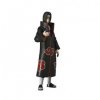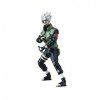McFarlane Toys takes the field once more with another highly detailed series of NFL superstars.
|
McFarlane Toys takes the field once more with another highly detailed series of NFL superstars.
Image will update once available.
|
This listing is for an in stock and ready to ship figure of shawn michaels in ljn form from the classic superstars collectors series 16 line from jakks. This is a non poseable figure. It will come to you mint on card and will come straight from a factory case. Item displays awesome. A great and highly collectible figure from the famous wrestler. Get yours now!
|
This listing is for an in stock and ready to ship figure of the ultimate warrior from the classic superstars collectors series 16 from Jakks. This is the variant that says"ultimate warrior"on the side and not "the ultimate warrior". It will come to you mint on card and in good condition. Item displays awesome. A great and highly collectible figure from the famous wrestler. Get yours now!
|
This listing is for an in stock and ready to ship figure of the warlord from the powers of pain. From the classic superstars collectors series 16 line from jakks. It will come to you mint on card and will come straight from a factory case. Item displays awesome and is in good condition. A great and highly collectible figure from the famous wrestler. Get yours now! I also have the barbarian in another listing, get them both to complete the powers of pain.
|
Now available from Toynami are these brand-new action figures based on the popular anime series Naruto: Shippuden! Each figure stands 4' tall and features multiple points of articulation. Packaged on blister card, includes various accessories and a display stand.
Itachi figure ONLY.
Upc: 816355005368
|
Now available from Toynami are these brand-new action figures based on the popular anime series Naruto: Shippuden! Each figure stands 4' tall and features multiple points of articulation. Packaged on blister card, includes various accessories and a display stand.
Kakashi figure ONLY.
|
Now available from Toynami are these brand-new action figures based on the popular anime series Naruto: Shippuden! Each figure stands 4' tall and features multiple points of articulation. Packaged on blister card, includes various accessories and a display stand.
Naruto figure ONLY.
|
Now available from Toynami are these brand-new action figures based on the popular anime series Naruto: Shippuden! Available in this assortment are Naruto, Kakashi, and Itachi! Each figure stands 4" tall and features multiple points of articulation. Packaged on blister card, includes various accessories and a display stand.
|
A Diamond Select Release! Art Asylum design and sculpt! Its time to go back to the future again! The sold out, hit Back to the Future line of Minimates is back , just in time to celebrate the 25th anniversary of the hit movie. Who could forget 1985, Max Headroom, Ronald Regan, John Hughes movies and, of course, Marty McFly. This box set celebrates the key characters from the franchise launching movie, Marty, Doc, Biff and the exclusive Minimates debut of Principal Strickland! Comes packaged in a full window box with replica Minimates movie poster on the back of the package.
|
A Diamond Select Release! Art Asylum design and sculpt! Hot off the presses comes the brand new X-Force team in their unique uniforms. Fresh off their debut in X-Men: Second Coming #2, Wolverine has put together this black Ops team with one goal in mind, take down the recently resurrected Apocalypse! This box set features, Wolverine, Archangel, Psylocke and Deadpool. Packaged in partial window box packaging (the same as past Marvel box sets) and limited to the specialty market, this 4 pack is sure to be a hit with fans and collectors alike.
|
Tamashii Nations is proud to announce the introduction of a second Mobile Suit Girl into the ranks of the Armored Girls Project (AGP) series. The MS Shojo GP-03S Stamen will come with a massive 15cm long Mega Beam rifle and feature extensive accessories as well as compatible armament with the previously released AGP MS Girl Wing Gundam EW ver. Also included in set are original armament accessories such as I-Field Generator and arm/joint parts; as well as bazooka, shield, beam saber, standard beam rifle, interchangeable hair, facial expression and hand parts.
Upc: 45-43112-77168-1
|
Add some vibrancy to Smurf Village as you construct these sets of some of the town's smufly exciting residents! Lazy Smurf is, as his name says, the laziest of Smurfs, taking naps whenever and wherever he can. Each set comes with pieces to build a little scene around these Smurfs.
|
Build your own Smurf village with Mega Bloks' new Smurfs Basic Building Sets! Each set comes with the pieces you need to construct your own Smurfs, their mushroom-shaped huts, tables, chairs, and accessories.
|
If you were a popsicle, casually tossed aside because you were melting or you weren't the right flavor, you would probably turn evil, just like the Creepsicles did! Look at it - joined at the hip, like a frozen Siamese twin, sad, unwanted, unloved. Now he's going to make people pay! Standing 6" tall atop a base, Creepsicles is made of polystone. Remember, two brains are better than one!
|
















